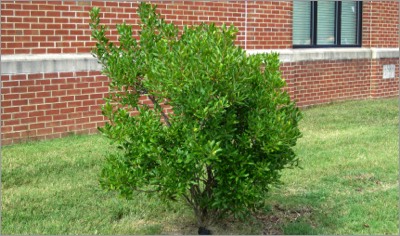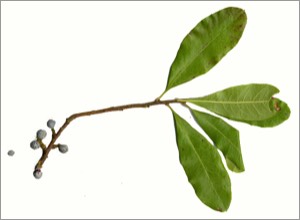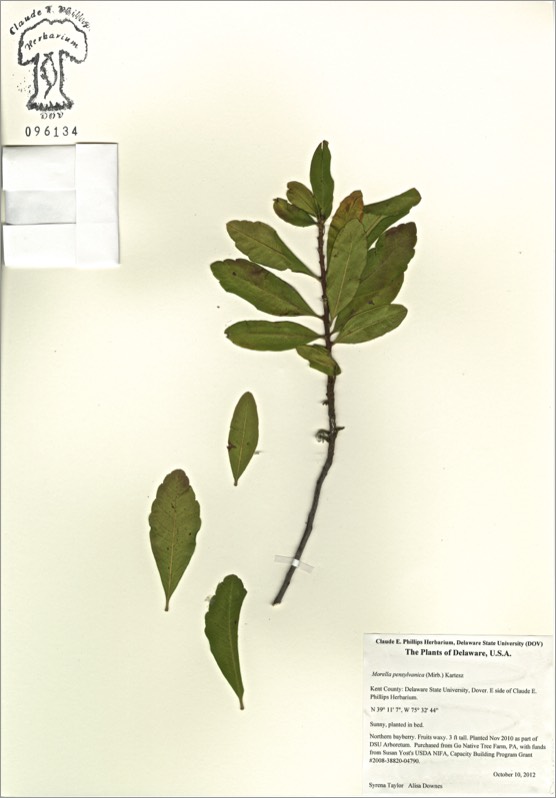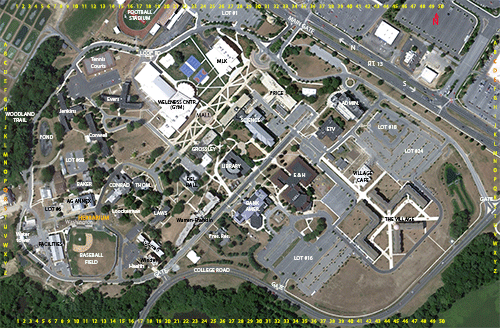Northern bayberry


Morella pensylvanica
NORTHERN BAYBERRY
Myricaceae
N.E. North America
Location: map coordinates T-12 (east side of Claude E. Phillips Herbarium, Washington Building), N 39°11'7'' W 75°32'44''
Planting history: planted November 2010. Source: Go Native Tree Farm, PA. (Dr. S. Yost, USDA NIFA Capacity Building Grant funds).
Description:
Native species, State Rank S5 (very common in Delaware)
NORTHERN BAYBERRY
Myricaceae
N.E. North America
Location: map coordinates T-12 (east side of Claude E. Phillips Herbarium, Washington Building), N 39°11'7'' W 75°32'44''
Planting history: planted November 2010. Source: Go Native Tree Farm, PA. (Dr. S. Yost, USDA NIFA Capacity Building Grant funds).
Description:
- deciduous shrub (the related southern bayberry is evergreen)
- formerly Myrica pensylvanica (synonym)
- leaves and fruits have the familiar scent of bayberry
- flowers inconspicuous; dioecious (separate male and female plants)
- fruits thickly coated with waxy white/gray coating, traditionally used to make bayberry candles
- nitrogen-fixing; unusual for a non-leguminous plant
- habitat: moist to well-drained soils, especially sandy soils
- native range Maine to North Carolina
Native species, State Rank S5 (very common in Delaware)


HIT REFRESH TO START LOCATION GRAPHIC